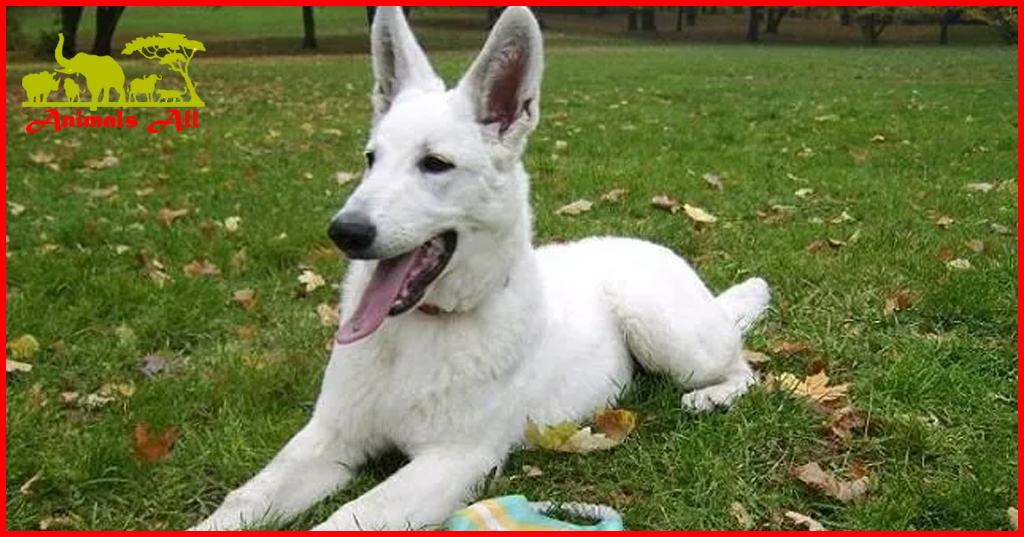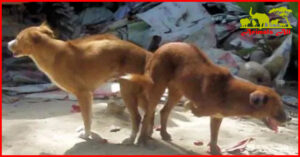
A complete information of White Swiss Shepherd Dog
White Swiss Shepherd Dog is Originated from the same period as the German Shepherd Dog. It is a descendant of the German Shepherd Dog. Original use: shepherd dog ; Uses: military dog , police dog , search and rescue dog , guide dog , shepherd dog, ornamental dog .
Historical Origins
German Shepherd Dogs have been widely recognized in the world . Many dog associations and clubs in the world will accept this dog breed from Germany in 1899. However , only a few countries’ associations or clubs allow white German Shepherd Dogs to be registered as purebred dogs . Many associations and clubs will not register white German Shepherd Dogs as purebred dogs. Of course, white German Shepherd Dog fans have not given up their love.
The white fur of white German Shepherd Dogs is not caused by albinism , but by the genes carried by German Shepherd Dogs themselves. Because AKC and CKC do not recognize it as a German Shepherd Dog, it is recognized as a separate breed. The Swiss call it “White Swiss Shepherd Dog” . After many efforts, the Swiss Kennel Club (SKG) finally made the White Swiss Shepherd Dog recognized by FCI in 2002. The UKC also recognized the White Shepherd Dog in 1999 .

Details description
Habits
A fairly intelligent dog, with a direct, bold, but non-hostile personality. He seems rather aloof, which makes him difficult to approach and establish friendships with. He is intelligent and trustworthy, and if trained as a puppy , he can become an obedient and loyal companion for the whole family. The breeder must pay careful attention to the White Swiss Shepherd Dog, which is a very active animal both mentally and physically. He is capable of doing any kind of work. The ideal White Swiss Shepherd Dog should be a hard-to-buy working dog , whose body structure and gait enable him to complete very difficult tasks. The White Swiss Shepherd Dog is exactly the same in structure as the German Shepherd Dog, and his personality is also similar, but he is slightly more sensitive than the German Shepherd Dog. .
Body shape
Shoulder height: 55cm~66cm; Weight: 25kg~40kg
Head
The head is noble, with clean lines, strong but not clumsy, but not too slender and in proportion to the body. The male’s head is clearly masculine, while the bitch’s head is clearly feminine. When viewed from the front, the forehead is moderately arched, the skull is sloping and long.
Ear
Slightly pointed, in proportion to the skull, forward, at attention, the ears are carried erect, with the ideal position (ear position) being that, when viewed from the front, the centre lines of the ears are parallel to each other and perpendicular to the ground. (Disqualification: Cropped or drooping ears )
Eyes
Medium size, almond shaped, slightly slanted, not prominent. As dark as possible.
Nose
Nose black. (If the nose is not completely black, it is a disqualification.) Lips are very suitable and the jaws are very strong. Teeth: 42 teeth, 20 upper teeth and 22 lower teeth, the teeth are strong and the bite is scissors. Overshot or level bite is not desirable, undershot bite is a disqualification. The dentition is complete. Except for the first premolars, the absence of other teeth is a serious defect.
Jaw
The muzzle is wedge-shaped, long and strong, with its outline parallel to the outline of the skull.
Limbs
Ideal length is not provided by the length of the back alone, but by the overall length (well proportioned, in harmony with the height), which, when viewed from the side, is the length of the forequarters, the length of the withers, and the length of the hindquarters. The neck is strong and muscular, clean-cut and relatively long, in proportion to the head, and free of loose skin.
When he is concerned or excited, the head is lifted and the neck is held high, otherwise the typical posture is that the neck is stretched forward (supporting the head) rather than stretched upward, with the head slightly above the shoulders, especially when moving. The withers are highest, sloping back and transitioning into a straight back. The back is straight and very solid, without sag or hump. The back is fairly short, giving the impression of depth and solidity to the whole body, but not heavy.
It begins at the breastbone, is full, and goes down between the legs. The chest is deep and broad, not shallow, giving ample room for the heart and lungs, and projects forward, with the breastbone protruding in front of the shoulder blades when viewed in profile. The ribs are well sprung and long, neither barrel-chested nor flat-chested. The ribs extend down to the elbows. Correct rib organization allows the elbows to move freely forward and backward when the dog trots. Ribs that are too round will restrict the movement of the elbows and cause them to turn outward; ribs that are too flat or too short will cause the elbows to turn inward. The ribs are well laid back, giving a relatively short loin.
Sole
The paws are short, the toes are compact and well-arched, the pads are thick and firm, and the nails are short and white.
Tail
Tail is densely haired, with the vertebrae extending to at least the hock. The tail is smoothly carried on the croup, low and not too high. In repose, the tail hangs straight down with a slight curve, forming a saber shape. A slight hook, sometimes carried to one side of the body, is a fault (to the extent that it detracts from the overall appearance). When the dog is excited or in motion, the curve is accentuated and the tail is raised, but never curled above the vertical . A short tail or a stiff tip are serious faults. Disqualification: A docked tail is a fault.
Coat
The ideal dog has a medium-length double coat . The outer coat is as dense as possible, straight, coarse, and lying flat against the body. A slightly wavy coat, usually of a wiry texture, is permissible. The head, including the inside of the ears, forehead, legs and paws are covered with shorter hair, and the neck is long and dense. The hair on the forelegs and back of the hind legs is slightly longer, extending to the pasterns and hocks respectively. Faults: Soft coat; silky coat; outer coat too long; woolly coat; curly coat; open coat.
Gait
White Swiss Shepherd Dog’s gait is that of a trot. His body structure is suited to his job. General impression: His gait is beyond imagination, elastic, very easy, smooth and rhythmic, with very long and low frequency. When pacing, the stride is long because the stride of both the front and rear legs is very long. When trotting, the stride of the front and rear legs is not as long, but the stride is still quite long, the movement is powerful but easy, and the gait is stable because the movements are coordinated and balanced, like a well-oiled machine.

